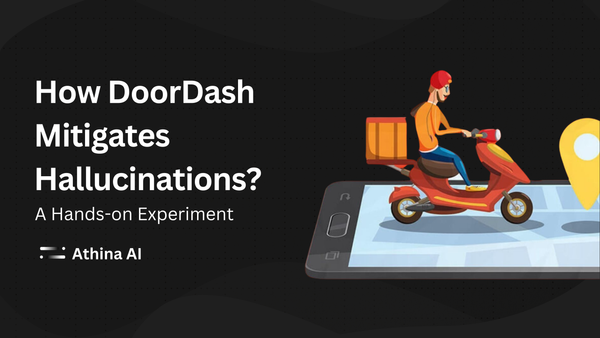From Thought to Action: How Planning Boosts LLM Agents

Introduction
In the quickly developing field of artificial intelligence, the capacity to effectively handle challenging tasks is becoming more and more important.
As AI engineers, we're always looking for methods to improve the functionality of our models.
The Challenge of Complex Tasks
Real-world scenarios often present challenges that are too intricate for simple, one-step solutions.
To address this, researchers have developed innovative methods that allow AI to break down and plan for complex tasks more effectively.
Chain of Thought: Thinking Step by Step
One of the most significant breakthroughs in recent years is the Chain of Thought (CoT) technique.
This approach instructs the model to "think step by step," effectively decomposing complex tasks into smaller, more manageable steps.
CoT not only improves performance but also provides insight into the model's reasoning process.
"Chain of Thought transforms big tasks into multiple manageable tasks and sheds light on an interpretation of the model's thinking process."
Tree of Thoughts: Exploring Multiple Possibilities
Building on CoT, the Tree of Thoughts method takes planning a step further. It creates a tree structure of potential reasoning paths, allowing the AI to explore multiple possibilities at each step.
This approach can use either breadth-first or depth-first search strategies, evaluated by a classifier or majority vote.
Task Decomposition Strategies
Task decomposition is the process of breaking down complex tasks into smaller, manageable components or steps.
This approach is particularly useful for Large Language Models (LLMs) as it enhances their ability to understand and execute tasks effectively.
Here are several strategies for task decomposition:
- Simple prompting: This strategy involves using straightforward prompts to elicit a step-by-step response from the LLM. For example, a prompt might be structured as "Steps for XYZ: 1." This format encourages the model to generate a list of sequential actions or steps required to complete the task.
Advantage: Simple prompting is easy to implement and can quickly yield structured responses. It works well for tasks that can be easily broken down into clear steps.
- Task-specific instructions: This strategy involves providing the model with specific instructions tailored to the task at hand. By clearly defining the desired output, the model can better understand the context and requirements, leading to more relevant and focused responses.
Advantage: Task-specific instructions help guide the model's output more effectively, ensuring that the response aligns with the user's expectations. This approach is particularly useful for creative tasks or those requiring specific formats.
- Human input: Incorporating human input into the task decomposition process allows for a more nuanced understanding of complex tasks. This can involve providing examples, clarifying expectations, or even collaborating with the model to refine its approach.These methods fall into two main categories:
Decomposition-First Methods
Decomposition-First Methods are strategies that prioritize breaking down complex tasks into simpler, more manageable components before executing them.
This approach allows for a clearer understanding of the task at hand and facilitates more effective processing by Large Language Models (LLMs).
These methods break down the task into sub-goals before planning for each one. Examples include:
- HuggingGPT: Utilizes various multimodal models for complex tasks
- Plan-and-Solve: Improves zero-shot reasoning with a two-step prompt
- ProgPrompt: Translates tasks into coding problems
Interleaved Decomposition Methods
Interleaved Decomposition Methods involve a more dynamic approach to task decomposition, where tasks are not only broken down but also interleaved with other tasks or processes
.
This method can enhance the efficiency and effectiveness of task execution. These methods alternate between decomposition and planning.
Key examples are:
- Chain-of-Thought (CoT): Guides reasoning through constructed trajectories
- ReAct: Decouples reasoning and planning for improved capabilities
- PAL: Leverages coding abilities during reasoning
Advantage: Human input enriches the task decomposition process, allowing for greater flexibility and customization. This strategy is particularly effective for complex or subjective tasks where user preferences play a significant role.
Self-Reflection: The Key to Continuous Improvement
Self-reflection plays a vital role in enhancing the capabilities of advanced AI systems, particularly in the context of Large Language Models (LLMs).
By enabling these models to evaluate their own decisions, learn from mistakes, and refine their outputs, self-reflection fosters continuous improvement.
Some notable approaches include:
- ReAct: ReAct (Reasoning and Acting) is an approach that integrates reasoning processes with action execution within language models. This method allows LLMs to not only generate responses but also to evaluate the reasoning behind their actions.
- Reflexion: Reflexion is a framework that equips AI agents with dynamic memory and self-reflection capabilities. This approach allows models to store past interactions and learn from them over time.
- Chain of Hindsight: The Chain of Hindsight approach enhances model outputs through annotated feedback sequences. This method involves a structured feedback loop where the model receives commentary on its previous responses.
The Future of AI Planning
As we continue to push the boundaries of AI capabilities, these advanced planning techniques are paving the way for more intelligent, adaptable, and efficient AI agents.
By breaking down complex tasks, exploring multiple possibilities, and incorporating self-reflection, we're moving closer to AI systems that can tackle real-world challenges with human-like problem-solving skills.
For AI developers, understanding and implementing these techniques can significantly enhance the performance and versatility of their applications.
As we look to the future, it's clear that mastering these advanced planning methods will be crucial in creating the next generation of AI solutions.



